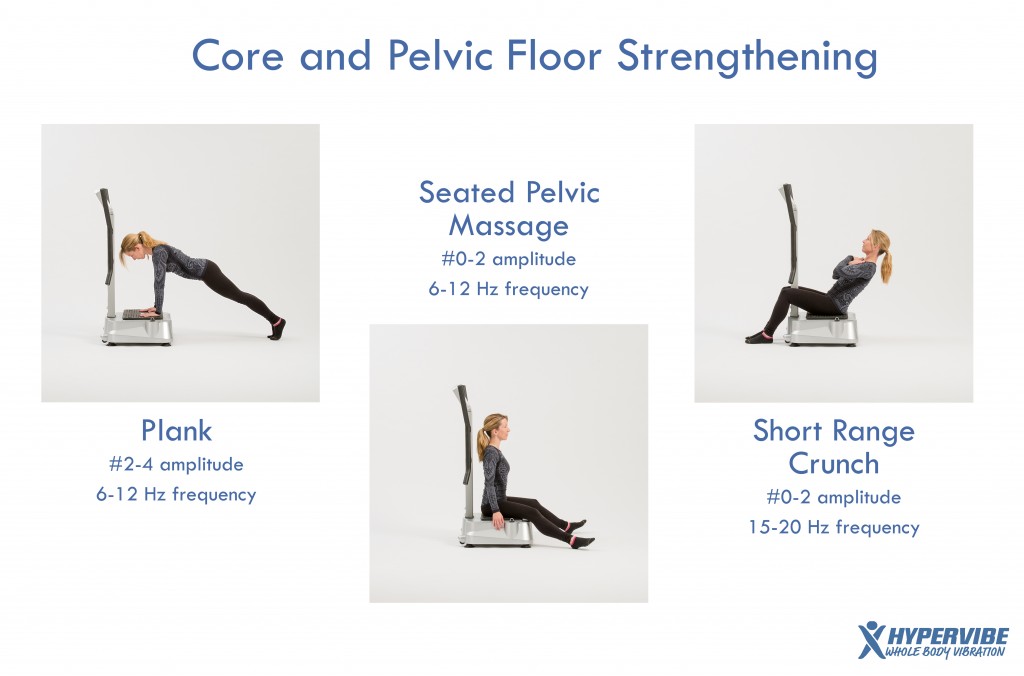
Pregnancy and giving birth can cause the pelvic floor muscles to become too weak, but these aren’t the only factors that can lead to the weakening of the muscles that support the bladder, bowel and uterus. The pelvic floor muscles form the base of the group referred to as “core muscles”, and they’re located in the pelvis, extending from the pubic bone to the tail-bone.
They are involved in maintaining bladder and bowel control, in stabilizing and supporting the spine, as well as in controlling the intra-abdominal pressure during exercise. Also, these muscles play a role in sexual function, and they support the internal organs, lifting them up.
These muscles may loosen for physiological purposes, such as allowing the passage of urine, but may also become weak and fail in supporting the internal organs, in certain conditions. Besides childbirth and pregnancy which were already mentioned, obesity, chronic constipation, heavy lifting and chronic cough may also lead to the weakening of these muscles.
We’ll discuss each of these causes separately, but before doing so, it’s worth mentioning that the reverse is also possible, and in some cases the muscles may get tighter than normal. This issue is more complex and may lead to complications, such as the impossibility to empty the bladder and bowel completely, or difficult and painful intercourse.
You are likely to experience symptoms like:
These may be accompanied by other symptoms and may vary from one person to another, and may be worsened by medications such as those used for treating cystitis (inflammation of the bladder).
As previously mentioned, pregnancy is one of the main causes of weak pelvic floor muscles in women. The greater the weight that pushes on the pelvic floor, the higher the risk of muscle damage, and women with multiple births or large babies are more likely to suffer from this condition.
Heavy lifting and high impact exercise can also lead to weaker pelvic muscles, because of the pressure they create on these muscles and inside the abdomen. Wearing a fitness belt may help in maintaining the proper intra-abdominal pressure and may relieve some of the stress placed on these muscles during weight lifting exercises, while protecting the spine.
But strenuous exercise isn’t the only factor that causes increased pressure and can ultimately lead to prolapse. People who work in jobs that require them to constantly lift heavyweights, such as courier services for example or even nursing, are also prone to experiencing this problem. High impact sports may increase the risk of leaking urine, and elite athletes are at risk just like amateur ones.
Repeated straining on the toilet, and chronic constipation can also cause the weakening of the pelvic muscles, and in complicated cases, the internal organs can prolapse into the anus or vagina. Ongoing cough in smokers, bronchitis sufferers or asthma patients is also listed as a risk factor for pelvic floor weakness, and can increase the risk of urinary incontinence.
Other potential triggers include being overweight or obese because the extra weight places a greater strain on the pelvic muscles. Older people are more likely to suffer from weak pelvic floor and incontinence, and those with lower estrogen levels after menopause, or who suffered surgical interventions that involved the cutting of pelvic floor muscles, are at greater risk.
The most accessible and convenient solution is to perform exercise that targets the pelvic floor muscles. These can be done without any fitness machine, or on a Hypervibe whole body vibration platform.
If you prefer no-equipment exercises, here are some examples – do these while lying down, sitting or standing, as you wish. Aim for 5-6 sessions every day, and increase to 8-10 repetitions when you feel your muscles are stronger.
Start in a relaxed mood, and relax your abdominal muscles. Squeeze the pelvic floor muscles as hard as you can, and maintain the tension for 2-3 seconds, then gently release and repeat the exercise 5 more times. Take a short break (30-60 seconds), then squeeze again and hold strongly for 5-10 seconds, while breathing normally. Release slowly and repeat 5 more time, then take a 30-60 seconds to break. If you need to, take 5-10 second breaks between sets as well.
Sit or lie on your back with knees bent and legs comfortably apart, and relax your muscles. Focus on the pelvic floor muscles and contract as if you were holding on from passing urine. Tighten the muscles as strongly as possible and hold for 3-5 seconds, then relax for another 10 seconds and repeat 5 more times. You should feel your pelvic floor muscles lifting up and going down as you perform this exercise.
Finally, remain in the same position and start squeezing and lifting the pelvic floor muscles as quickly and strong as possible. Squeeze and let go, without holding on the contractions. Repeat 10 times, then relax.
If you own a Hypervibe machine, you can use it to exercise your pelvic floor muscles, as studies have shown that vibration platform exercises are beneficial for this particular group of muscles. German scientists found that WBV mixed with conventional training on the pelvic floor muscles can speed up recovery and reduce the urine loss in people with prostatectomy or cystectomy, strengthening the pelvic muscles.
Also, Korean researchers found that exercising on a whole body vibration machine in the posterior pelvic tilt position leads to greater stimulation of these muscles and helps in strengthening them while improving stability and posture.
Here are some Hypervibe exercises for the pelvic floor muscles:
Have something to add to this article? Comment below or join our Facebook community and share your thoughts with us there!

Updated on: 08.09.2021 The lymphatic system is involved not only...

Stress can make you gain weight – we’ve heard this...

Various theories exist to answer this question. As you will...

Both rebounding and jumping on a trampoline are excellent ways...

Our series of whole body vibration machine exercise articles continues...